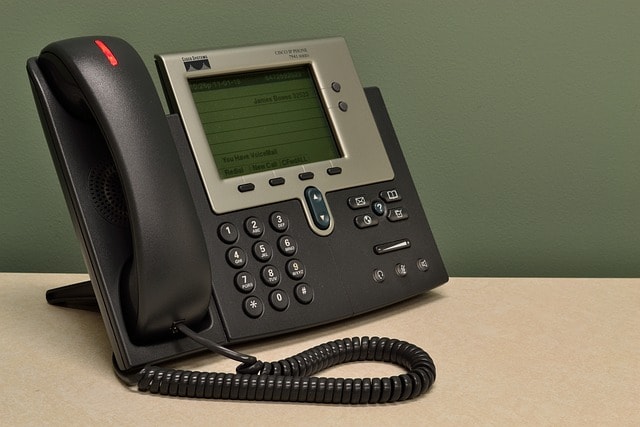
How to Understand SIP Functionality – Fast
Introduction to Session Initiation Protocol (SIP)
Does your business still rely on outdated communication systems, facing high costs and limited flexibility? You must be wondering, “How does SIP work?” and whether it would be a beneficial alternative. Session Initiation Protocol, or SIP, which is playing an increasingly essential role in real-time multimedia communication across the globe, could indeed be that alternative.
For small- to medium-sized businesses, SIP can help simplify your communication needs and reduce costs. Much like a systematic investment plan (SIP) in mutual funds promotes disciplined savings and investment, SIP in communications offers a structured and efficient approach to managing your communication systems. Being the linchpin of today’s communication standards, it enables everything from VoIP telephony and video conferencing to instant messaging. It’s ushering in an era of modern, efficient, flexible, and cost-effective communication.
Quick Sync on SIP
In a nutshell, SIP is a series of rules and formatting instructions that help establish, manage, and terminate multimedia communication sessions. Here’s a simple breakdown of how it functions:
Registers users and locations: SIP encapsulates details of each user’s IP address and identity to verify them before a call.
Invites users: A SIP message from one user initiates a connection by inviting other parties to a call.
Specifies formatting details: SIP coordinates the details, such as the media codecs to use, the active media streams, and the protocols for media transmission.
Confirms receipt and initiates the session: Through its messages, SIP ensures that every participant is on the same page before the session starts.
Terminates session: Upon completion, SIP also communicates to end the session effectively.

By the end of this article, we’re confident that we will have answered your questions surrounding “how SIP works” and you will have gained a solid understanding of its potential for transforming your business’s communication landscape.
Understanding How SIP Works
To fully grasp “how does SIP work,” it’s pivotal to understand its three main tasks: establishing a SIP connection, handling user registration and session initiation, and its role in VoIP calls. Similarly, a SIP investment plan in finance involves systematic investing in mutual funds, with features like modest initial investments, regular intervals, and the flexibility to adjust contribution amounts.
The Process of Establishing a SIP Connection
The first step in the SIP process is to establish a connection. This is done by connecting one SIP address to another before any data transfer can occur. Think of it as a traditional phone dialing a number and waiting for the other side to pick up. The most significant part of a VoIP call using SIP is the call signalling. This is the initial connection between two interlocutors: the outbound caller and the call receiver.
SIP works by determining the user’s capabilities and setting up the communication session. For instance, it rings from one user to the other. Once the connection is established, the data transfer phase begins, which is typically handled by a different set of protocols.
How SIP Handles User Registration and Session Initiation
Upon establishing the connection, SIP then performs the role of user registration and session initiation. When a user places a call from their device, SIP initiates the call with a server. The communication data is sent through the trunk, either through the organization’s communication network or a PSTN (Public Switched Telephone Network), and routes the communication data to its destination. When either user ends the call, SIP terminates the connection on the network.
The Role of SIP in VoIP Calls
SIP has a significant role in VoIP (Voice over Internet Protocol) calls. It is primarily used to set up and terminate voice or video calls, by defining the messages sent between endpoints, establishing a call connecting one SIP address to the other before the call’s data transfer can happen.
During a VoIP call, voice information is encoded with codecs before going out to the internet. This process translates the audio signals into data. Encoded packets of audio data travel using a real-time transport protocol (RTP), which carries audio and video data in real-time.
Finally, another application layer protocol, called the Session Description Protocol, works with SIP to signal what type of media the SIP client is sending to the call, and the client receiving the call can support.
SIP allows for robust and flexible communication, supporting not only voice calls but also video conferencing, instant messaging, and media distribution. By understanding “how does SIP work,” businesses can leverage this technology to enhance their communication strategy and significantly improve their operational efficiency.
In the next section, we will delve into the technology behind SIP and the role of user devices, network connectivity, proxy servers, and registrar servers in SIP.
The Technology Behind SIP
Understanding the technology behind SIP (Session Initiation Protocol) is key to leveraging its full potential for your business. In this section, we’ll explore the role of user devices, network connectivity, proxy servers, and registrar servers, and how SIP uses requests, messages, and responses to establish communication.
The Role of User Devices, Network Connectivity, Proxy Servers, and Registrar Servers in SIP
Let’s start by breaking down the different network elements that the SIP Protocol relies on:
User Devices: These are the endpoints that send requests and communicate with other users’ software. User devices that can use SIP include computers, mobile phones and smartphones, tablets, or hardware VoIP phones. They connect to the internet and run SIP-based applications like VoIP phone systems, video meeting software, and instant messaging interfaces.
Network Connectivity: For SIP software to work effectively, it requires an internet connection. This connectivity can be at the local area network (LAN) and wide area network (WAN) levels, facilitating the transmission of requests and data between clients and servers.
Proxy Servers: These servers receive requests from user endpoints and forward them to the recipient’s server or device. They can forward messages and requests to multiple endpoints, enabling a single user to send data to many other users in a multiparty SIP call.
Registrar Servers: These servers receive REGISTER requests from user devices and share this information with other users in the media session. This process authenticates users for the interaction and enables other protocols, such as RTP, to send data directly to each user’s endpoint during real-time media communications.

How SIP Uses Requests, Messages, and Responses to Establish Communication
The communication capabilities of SIP are enabled through a series of service requests and messages. When a user initiates a SIP application, their device sends a request to the SIP server. This server then forwards the request to the recipient’s SIP server, which sends the message to the recipient’s device.
The back-and-forth communication occurs in nanoseconds, with each party in the call acting as both a request sender (client) and responder (recipient). This rapid exchange allows SIP to synchronize software and initiate a VoIP call.
There are 14 total SIP requests, but the following 10 are the most crucial:
REGISTER: Identifies each user’s address to authenticate users and direct media data.
INVITE: Initiates the SIP call and media session.
ACK: Confirms receipt of the sender’s message.
BYE: Terminates the session.
CANCEL: Cancels a request that hasn’t been completed yet.
UPDATE: Modifies a media session.
REFER: Facilitates a call transfer.
SUBSCRIBE: Subscribes a user to receive notifications from a notifying party.
NOTIFY: Informs subscribers about changes or events.
MESSAGE: Sends a text message, such as an SMS or instant message.
By understanding these requests, businesses can better grasp “how does SIP work” and apply this knowledge to enhance their communication systems. In the next section, we’ll explore the diverse applications of SIP in modern communications.
SIP Routing: Directing Messages for Reliable Communication
SIP routing is a critical component of the Session Initiation Protocol (SIP) that ensures reliable communication by directing messages between SIP servers. Think of SIP routing as the traffic controller of your communication network, ensuring that every message reaches its intended destination without unnecessary delays or detours.
When a SIP message is sent, it doesn’t travel directly from the sender to the recipient. Instead, it passes through a series of SIP servers, each using routing tables to determine the next hop for the message. This process is akin to how postal services route mail through various sorting facilities before it reaches your mailbox. SIP servers use protocols such as SIP, DNS, and NAPTR to resolve the destination IP address and port number, ensuring efficient message delivery.
Effective SIP routing is essential for maintaining high-quality communication. It minimizes latency, reduces packet loss, and prevents other issues that can degrade the user experience. Moreover, SIP routing plays a crucial role in load balancing and failover. By distributing traffic across multiple SIP servers, it helps prevent overload and ensures that communication services remain available even if one server fails. This scalability and reliability make SIP routing an indispensable part of modern communication systems, enabling businesses to provide seamless and efficient communication services to their customers.

Applications of SIP
SIP is a versatile protocol with wide-ranging applications in various communication channels, much like how a Systematic Investment Plan (SIP) is used in mutual fund investments. Its capabilities extend beyond the traditional phone calls, powering modern communication tools like VoIP and VoLTE, SIP trunking, as well as video conferencing and instant messaging.
SIP in VoIP and VoLTE
Session Initiation Protocol (SIP) plays a significant role in business Voice over IP (VoIP) and voice over LTE (VoLTE). SIP is the technology that enables your VoIP phone system to initiate, maintain, and terminate a call, making VoIP calls over the internet possible. SIP even allows for VoIP calls over mobile apps, thus facilitating remote work and boosting productivity. Whether your team is in the office or working from home, SIP ensures everyone stays connected and communicates effectively.
SIP Trunking and Its Benefits
SIP also plays an integral role in SIP Trunking. In a nutshell, SIP Trunking is the method of sending voice and other Unified Communications services over the internet. It replaces traditional telephone lines, allowing businesses to communicate with anyone who has a telephone number. SIP trunks have virtually replaced PRI (Primary Rate Interface) as the preferred communication routing method for businesses worldwide.
One of the key benefits of SIP Trunking is cost-effectiveness. SIP Trunking eliminates the need for physical connections to a PSTN, reducing the costs associated with maintaining multiple phone lines. It is also scalable, allowing businesses to add or remove lines as needed. Plus, it offers advanced features like call forwarding, recording, and text comments, enhancing your business’s communication capabilities.
SIP in Video Conferencing, Instant Messaging, and Presence Detection
Video conferencing has become a staple in the modern business world, and SIP plays a pivotal role in this area as well. It facilitates direct media sessions for video communications, making virtual meetings and webinars possible.
SIP is also used in instant messaging, providing real-time text transmission over the internet. Just like with VoIP calls and video conferencing, SIP messages initiate the session, maintain it, and end it when users are done.
Finally, SIP has a role in presence detection, a feature that lets users know the availability of others on the same network. This can be particularly handy in a business setting, where knowing the status of a colleague (available, busy, away, etc.) can improve communication efficiency.
In conclusion, understanding “how does SIP work” can open up a world of possibilities for your business communication needs. Whether it’s VoIP, SIP trunking, or instant messaging, SIP can enhance and streamline your communication processes, making your business more efficient and connected.
Advantages and Limitations of SIP
The Benefits of Using SIP
At SIP.US, we understand that the benefits of using SIP for communication are numerous. Primarily, it’s a cost-effective solution. When compared to traditional landline phone systems, SIP applications often cost under $25 monthly per user and provide robust communication capabilities. This makes communication more affordable for businesses of all sizes.
Moreover, most SIP-based platforms are hosted virtually by the provider, requiring virtually no maintenance or technical expertise from the end user. This translates to lower maintenance costs and less time spent on technical issues, freeing up your team to focus on the tasks that matter.
The setup is another advantage. With SIP, installing a hosted phone system is as easy as downloading an app from your service provider. Users can download the app, install it, and begin using the service within minutes. This ease of setup reduces downtime and ensures that your communication system can be up and running quickly.
SIP-based VoIP applications also offer advanced phone system features such as multi-level IVR menus, call queueing, comprehensive user dashboards, call monitoring, and analytics. These features can enhance your business communication, improving efficiency and customer service.
Moreover, SIP enables multiple communication channels. This gives businesses multiple ways to communicate with customers or internally.
Finally, SIP solutions offer scalability and remote access. Since SIP can be embedded into cloud-hosted software, businesses can provision communications apps for team members based anywhere. This feature makes it easy for teams to add and remove users, including remote staff, and ensures accessibility across various devices like desktops, laptops, cell phones, or VoIP phones.
Potential Challenges and Limitations of SIP
While SIP offers numerous benefits, it’s important to consider potential limitations. One challenge involves bandwidth. Real-time media communications involving SIP, such as VoIP calls or video meetings, require an ongoing back-and-forth data flow between all users. This demands a large amount of available bandwidth on local networks, which might limit the number of concurrent SIP users a single router can support.
Additionally, while hosted SIP platforms are low maintenance, on-premise SIP architecture like SIP trunking and on-premises PBX systems require a knowledgeable IT staff. Businesses need to factor in the costs of maintaining and managing these systems when considering SIP.
Security is another issue to consider. While SIP media streams are generally secure and encrypted, there are instances when attackers can intercept data or join SIP calls as an unauthorized user. Hence, it’s crucial to ensure that your SIP provider offers robust security measures to prevent unauthorized access and protect your communication data.
In conclusion, understanding “how does SIP work” involves understanding both its advantages and potential limitations. At SIP.US, we are committed to helping businesses navigate these challenges and reap the benefits of SIP for effective and efficient communication.
SIP Security Measures
In the realm of SIP communications, security is paramount. Protecting your communication channels from unauthorized access, eavesdropping, and other threats is essential for maintaining the integrity and confidentiality of your data. SIP security measures encompass encryption, authentication, and authorization, each playing a vital role in safeguarding your communications.
Encryption is the first line of defense against eavesdropping and tampering. By using secure protocols such as Transport Layer Security (TLS) and Secure Real-time Transport Protocol (SRTP), SIP encryption ensures that your messages are encoded in a way that makes it extremely difficult for unauthorized parties to intercept and read them. This is akin to sending a letter in a sealed, tamper-proof envelope rather than a postcard.
Authentication verifies the identity of SIP users, ensuring that only authorized individuals can access SIP services. Protocols like Digest Authentication and OAuth are employed to check user credentials, much like a security guard checking IDs at the entrance of a secure facility. This prevents unauthorized access and ensures that your communication network remains secure.
Authorization controls access to SIP services and resources based on user roles and attributes. Using protocols such as Role-Based Access Control (RBAC) and Attribute-Based Access Control (ABAC), SIP authorization determines who can access what, ensuring that users only have access to the resources they need. This is similar to granting different levels of access to employees based on their job roles within a company.
Together, these SIP security measures create a robust defense system that protects your SIP communications from various threats, ensuring that your data remains secure and your communication channels remain reliable.

Choosing a SIP Provider: Factors to Consider
Choosing a SIP provider is a significant decision for any business, much like selecting the right SIP investments is crucial for individual financial growth. It involves considering factors such as the communication channels you need, the architecture that best suits your needs, and the software features that can enhance your communication experience. In this section, we will guide you through these considerations and highlight why SIP.US stands out as an excellent choice for your SIP provider.
Comparing Software Features and Pricing
Once you have a clear understanding of your needs, compare various software solutions. Look for providers that offer a robust suite of features that match your requirements. Also, consider the pricing plans they offer. Affordable and transparent pricing is crucial in choosing a SIP provider.
One of the key aspects to consider is the scalability of the solution. The software should be capable of accommodating your team’s growth and changes. For instance, it should allow you to easily add or remove users, including remote staff.
The Unique Selling Proposition of SIP.US
Among the myriad of SIP providers, we at SIP.US believe that we offer a unique proposition for businesses. Our services are built on a commitment to customer satisfaction, providing fast set-up, an easy-to-use control panel, flexible plans, and predictable pricing.
We understand that every business has unique telephony needs, and we pride ourselves on our adaptability to meet these needs. We offer integration capabilities with your existing software and platforms, providing a unified communication solution.
In addition to these, we provide a high level of transparency that gives you greater control over your communication system. This allows you to see usage statistics, traffic levels, and active calls in real-time, enabling you to make prompt adjustments as needed.
Understanding “how does sip work” and choosing a SIP provider can be a complex task, but we at SIP.US are committed to making this process as seamless and efficient as possible. We invite you to consider us as your trusted partner in modernizing your business communications.
Conclusion: The Future of SIP in Business Communications
As we’ve seen throughout this guide, the future of SIP and its role in business communications is an exciting one. Just as investors hold mutual fund units after a Systematic Investment Plan (SIP) ends, businesses will continue to benefit from the advancements in Session Initiation Protocol (SIP) technology, which is at the forefront of transforming how they communicate, offering robust, flexible, and cost-effective solutions.
SIP technology has already made a significant impact, especially during the COVID-19 pandemic, where it facilitated efficient remote work. The power of SIP calling allowed companies to maintain seamless communication from any location. This trend isn’t just a temporary solution to a global crisis – it’s the new norm.
The integration of 5G networks is expected to greatly enhance the VoIP/SIP market, offering higher definition video content, faster loading speeds, and improved connectivity. This will undoubtedly reduce the number of dropped calls, boosting productivity and enhancing the user experience.
The evolution of SIP phones is another trend to watch. Future SIP phones will offer integration with popular apps like Zoom and Microsoft Teams, artificial intelligence solutions, and enhanced security features. They’ll provide a smartphone-like experience with touch-screen displays, noise-canceling microphones, high-definition audio, and power-saving programs.
Despite the few limitations such as the relative newness of the technology and some integration challenges, it’s clear that SIP is a game-changer in the communications field. It’s an easy-to-learn system that provides stellar call quality at minimal costs.
The future of SIP calling isn’t just about making calls over the internet. It’s about revolutionizing how we communicate and collaborate in the digital age. The potential of SIP calling is boundless and exciting, promising a more connected and efficient world.
As we look forward, we at SIP.US are committed to helping businesses harness the power of SIP calling. We provide the tools you need to stay ahead of the curve in this rapidly changing digital landscape. Are you ready to revolutionize your business communication?
For further reading, we recommend exploring more about SIP on our blog, where you can find articles such as Advantages and Disadvantages of SIPUnderstanding the Basics of SIP Trunking.



